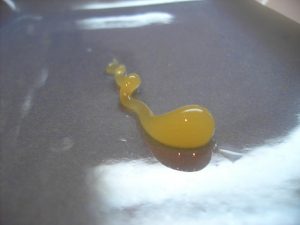During the many years I was trying to conceive, not once did any doctor recommend the post-coital test. I think nowadays this test has been talked about more. Still, not as much as it should be. The post-coital test diagnoses what many people couldn’t even imagine could happen: a hostility of the cervical mucus towards the sperm.
Did you know that mucus helps with fertilization? Mucus plays a fundamental role in pregnancy. With the right conditions and appropriate viscosity, it nourishes the sperm and helps it reach the fallopian tube in good health, where it will fertilize the egg1. Additionally, the use of fertility-friendly lubricants helps to improve vaginal moisture, acting like mucus to carry the sperm more easily to the eggs, balancing vaginal pH, and making the environment more suitable for their survival. This is the case with FamiGel, already tested and recommended by many women who have gotten their positive result. You can learn more about FamiGel here at this link.
If the mucus is inadequate, the sperm will have less chance of surviving in the vaginal environment and may end up dying. In some situations, the mucus can be thicker than ideal and prevent the sperm from being able to slide through and reach the uterus2.
Many couples are advised to do certain tests to find out if they are fertile or not, such as a sperm analysis3, hormone tests, hysterosalpingography4 and others.
However, the post-coital test usually gets left out. Some cases of unexplained infertility in young and healthy couples are not even investigated with this simple test, and that’s where the danger lies.
How Is the Post-Coital Test Done?
The post-coital test is done by collecting vaginal material after sexual intercourse within a certain period after the act. The material collected during the post-coital test will show how many sperm are alive and whether they are moving well.
If the man has already done a sperm analysis, it is easier to detect changes in his sample and then check if the difficulty in getting pregnant is due to the woman’s vaginal flora environment.

Some of the factors that contribute to making the vaginal environment unsuitable for sperm are, for the most part, acidic vaginal pH and altered bacilli, which make the mucus inappropriate for sperm movement toward the tube.
Getting this post-coital test done can be a challenge since few laboratories offer it. Normally, the test is done 48 hours after sexual intercourse, and the number of live sperm will indicate whether the vaginal mucus is hostile or not to sperm.
The laboratory assesses not only the quantity of living, motile sperm but also the color of the mucus. Thus, the mucus should be as transparent as possible for it to be healthy. If the color of the mucus varies, there may be some alteration or acidity.
For the test to be performed, the woman must be in her fertile period, and the couple must abstain from sex for at least 3 days. This will allow the collection of a satisfactory amount of material for analysis.
It is necessary to remain lying down for at least 1 hour after intercourse and to elevate the hips to avoid loss of semen. After this period, a pad should be used until the time of collection of the material to be analyzed.
To obtain a satisfactory reproductive result, at least 5 sperm must be alive and moving in a straight line, that is, swimming toward the tube to fertilize the egg. This analysis is carried out using high-powered microscopes.
Some laboratories consider a test satisfactory if it shows more than 10 sperm moving in a straight line. So, it becomes even more challenging to have a favorable post-coital test. This is why the post-coital test is combined with a sperm analysis to be sure where the problem lies.
Despite being reliable, as with any exam, there is a margin of error caused by poor timing of the material collection or the quality of the mucus specifically in that cycle.
Therefore, it is important to combine the post-coital test with other exams to be sure that the problem is related to this and, whenever possible, to perform the test in more than one cycle. Sometimes just hormonal changes in the woman are enough to cause a change in vaginal pH, a temporary state that may correct itself over time. Other times there are ways to overcome hostile mucus with artificial insemination, if necessary and the couple is able to do so.
Artificial insemination bypasses the part where sperm would need to pass through hostile mucus by taking the male sample directly to the tubes, where the sperm can more easily achieve pregnancy.
Alternatively, there are tricks to help make the mucus more suitable, such as friendly lubricants and sitz baths with vinegar or baking soda. In any case, if your infertility is unexplained and you haven’t done the post-coital test yet, talk to your gynecologist and get started!












